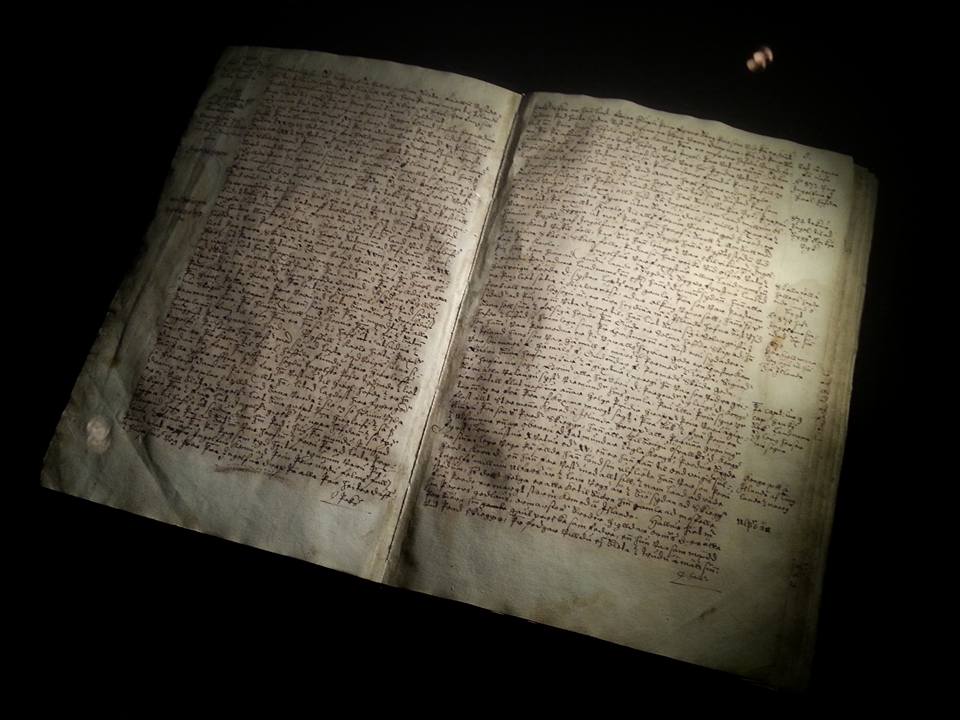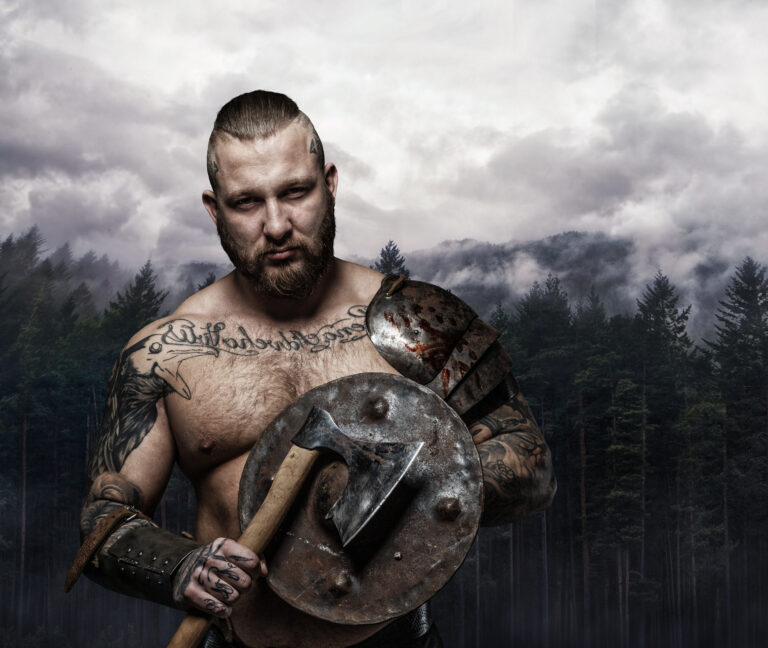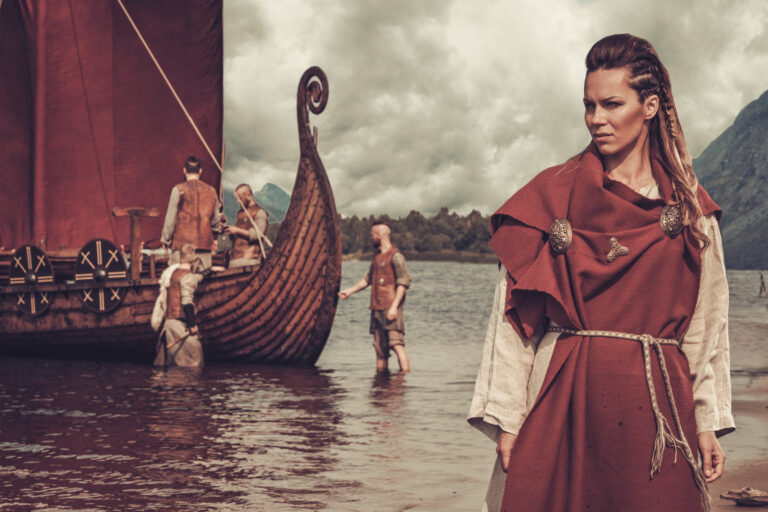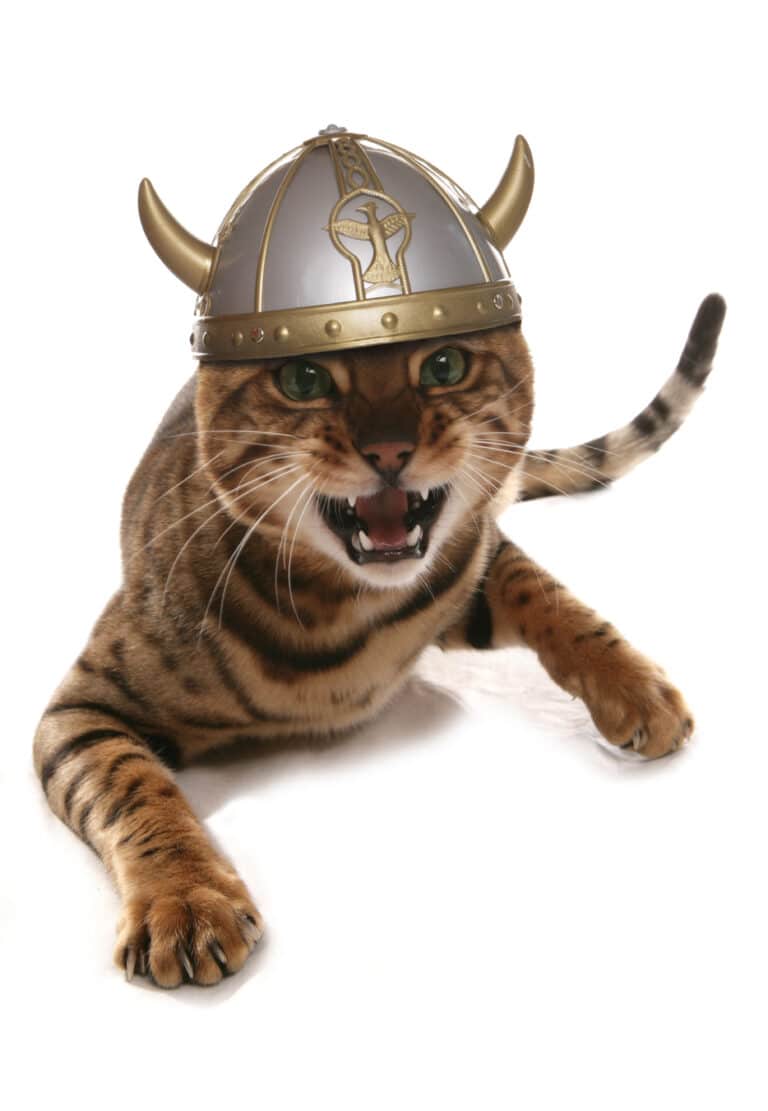Are Vikings from Iceland: A Consideration of Geography and Words
Are Vikings from Iceland? Well, that’s a big question that has many considerations. I’ll put it really simply first and say yes. However, this question needs a bit of exploration. First of all, you’ll see me mention the word “viking” quite a bit in various blog posts. Regardless, this word comes with much consideration. We use it interchangeably to mean medieval seafarers. But we also use it to mean warriors from Scandinavia. Currently, there is a huge debate surrounding the word viking and how it should be used.
We tend to use the word viking to denote Norse ancestry. But that’s not the intended use of the word. It is popular today to understand viking to be something you can genetically identify. Many people who are enthusiastic followers of Norse mythology will find links to Scandinavia in their DNA. This helps them claim to have “viking” roots. I never get myself too hung up over this word. Mainly because it is argued back and forth so much. Yet, like everything else I think it can evolve in meaning a bit.
I believe that a modern take on the word combines DNA associated with geographical locations. It then pulls in socio-historical constructed ideas of a viking identity. This allows people to say they have viking in them. Yet technically viking is not DNA that can be traced. It is the act of going out and voyaging on the sea. This could be therefore embarked upon by anyone, of any nationality. We do recognize of course that it was typically the Scandinavians who were known for this type of seafaring.

The Viking Age of Seafaring
This time of exploration is referred to as the Viking Age. It is roughly dated from 750-1100 CE. However, lots of historians argue that it can be extended beyond this to the 1500s. It is called the Viking Age because it is the time period in which Scandinavians left Scandinavia. Usually to go viking.You might notice that viking is more of a verb than a population. It is the act of seafaring, maybe even plundering. But it is not technically understood to mean the people themselves.
A Question of Geography
Asking the question “Are vikings from Iceland” is another tough one. The countries of Scandinavia we know today did not exist until the end of the Viking Age. Think of the Scandinavians leaving areas in which they originated and venturing out to find new lands. When they settled here, this might be called the viking diaspora. Dr. Judith Jesch has a chapter available online that speaks more to the complications and considerations of the viking diaspora. Go check it out here.
It’s really difficult to answer this kind of question plainly. Certainly the saga literature mentions Norway, Iceland, Greenland, Denmark, England, etc. But many of these places were only being newly discovered in the family sagas. Some were not unified, and some had other names, and other settlers. The saga literature, however, was written down many years after these events took place. They would now be familiar with place names, and simply apply them to the geographical location that is being described.
That geographical landmass, however, was certainly an area that Scandinavians discovered on their travels. If you look at modern day Iceland it contains evidence of viking settlements. There is evidence of Norse people, viking ship excavations, and linguistic evidence of law codes. The blood feud existed there, even animal bones that demonstrate earlier settlements remain. There is much evidence of human impact on the land.
So let’s look at how Iceland remembers the vikings.

The Land of Fire and Ice: The vikings in Iceland
Iceland sits near the top of the North Atlantic. The island has an extensive recorded history that was preserved mainly in the 13th century. It harkens back, however, to the 9th century, perhaps even the 8th century at times. The settlement of Iceland is recorded in what we know as the Landnámabók. This translates to “Book of Settlements”. It describes in fairly great detail the age of settlement in Iceland. It is believed to have been compiled in the 12th century by Ari Thorgilsson the Learned. When asking “Are vikings from Iceland”, we can look
Ari Thorgilsson was born circa 1067 in Iceland. His died on November 9, 1148. He was an Icelandic chieftain, priest, and historian. He was essential in the preservation of Iceland’s history of its early population and permanent settlement. His Landnámabók was the inspiration behind many of the family sagas that describe viking age Iceland. So are vikings from Iceland? Using the existing literature can help us understand this more.
Many Known Vikings are preserved by name in the Book of Settlements
Ari’s Book of Settlements tells us about 400 of the prominent first settlers. They arrived on Iceland between the years 874 and 930 AD. Settlers brought with them their wives, children, some livestock, domestic animals, and their existing belief in the Norse Gods. They would have already had viking roots, having come predominantly from Norway during the first settlement period. Some 3000 names and 1400 places are mentioned in the Landnámabók.
I guess this would mean that vikings (as we know them) did not originate from Iceland. But they certainly immigrated there. Icelandic vikings thrived, and their literature surpassed all other Old Norse sagas in importance. We often look to the family sagas, contemporary sagas, Edda’s, and legal documents as an authority over medieval sources. Other Nordic countries who have produced similar literature did not seem to rise to the same acclaim.

Book of Icelanders influenced Sagas of Viking adventure that followed
In addition to the Book of Settlements, Ari Thorgilsson also wrote Íslendingabók. This remarkable text translates to “The Book of the Icelanders”. It was the first history of Iceland written in the vernacular. It was penned in the 12th century but stretches back to the settlement era. The text goes all the way up to the year 1120 AD. It speaks on the Althing (the first Parliament), as well as the settlements at Greenland and North America.

The Settlement Story tells of Viking Exploration and the Discovery of Iceland
These medieval texts seem to agree with each other on the narrative of the first settlements in Iceland. According to the sources, Iceland was discovered when some sailors were blown off course. They had been trying to get to new colonies established on the Faroe Islands. This reportedly happened around 860 AD. This is nearly one century after the beginning of what we typically call the viking period. Most consider the attack of Lindisfarne in 793 AD the beginning on the viking age.
The appeal of course was that this newly discovered land was uninhabited. There is of course newer information suggesting that Irish monks had visited previously. It may have been that their travels to Ireland and the British Isles provided information on Iceland. The land was suitable for farming, fishing, and raising livestock. They also had hot springs. It was said that the forests extended from the mountains to the shoreline. If you are familiar with Iceland today then you know this is remarkable, as it is mostly barren of trees.
Author Jared Diamond, actually wrote an incredibly interesting book called Collapse. It speaks about the collapse of societies and the link with deforestation. He has a section on the Greenland vikings who disappeared. Go check out Collapse: How Societies Choose to Fail or Succeed if you are interested in the deforestation of Greenland. It speaks of the culture in Iceland, their exodus to Greenland, and their departure from there.
Let’s get back to the story. When they had discovered Iceland, they then sent out exploratory missions. The purpose was to investigate the land and gather some intel on its resources. This was followed by colonization from Western Norway and from Norse settlement areas in the British Isles.
The First Permanent Settler was a Norwegian Viking
Around the year 870-874 AD, Ingólfur Arnarson left Norway to settle in Iceland. As he’s sailing around he decides that he is going to throw his high-seat pillars overboard. He would make his home wherever they land. He thinks this will be a sign from the gods. Apparently it took a really long time to find them. Possibly three years. He didn’t so the searching himself though. He had slaves search for them. They eventually found them washed up on shore. This is where the first people settled in what is now Reykjavik.

Archaeological Evidence points to Early Viking Camps on Iceland
Reykjavik Longhouse
When I lived in Iceland they had unearthed a viking longhouse in the downtown area of Reykjavik. It was actually right next to my favourite pub. You can betcha that I snuck into the site a few times after a few pints. They investigated the site and removed artifacts. Afterward, I believe they were simply allowing a hotel to be built over it. Longhouses have been unearthed in various locations throughout Iceland. This kind of evidence adds tangible items to the saga literature. It basically corroborates the stories. There have been many instances where saga literature describes an event, or structure that later physical evidence supported.
The Eastern Settlement
In 2020 archaeological remains of two viking longhouses were unearthed in eastern Iceland on a farm. The significance of the find was in their age. The oldest structure dated back to the year 800 AD. This was obviously many years before viking settlers first colonized Iceland. The discovery of Iceland, therefore, likely happened much earlier. These were thought to be viking hunting settlements, and we probably used seasonally for many years.
This also bring Iceland back much closer to the start of the viking age. It also calls into question the historical accuracy of Ari Thorgilssons texts. It is still likely that they contain many truths. Perhaps they just didn’t go far enough back to mention seasonal camps.
Norse vikings seemed to be sniffing around Iceland at the beginning of the 9th century. Early Icelandic society began to form shorty after this, and the new land was heavily influenced by Norwegian vikings.
Walrus Ivory
Walrus ivory tells a tale of migration. Before the year 1100 most ivory being traded came from Scandinavia or Iceland. It was traded among a thriving European market. Therefore, when the norse migrated to Greenland, it is suspected there was an even greater supply of walrus ivory. The market was predominately populated by Greenlandic ivory from 1100 to 1400. Check out this National Geographic article. It posits that ivory might have been a motivating factor in the norse vikings choosing to move to Greenland. It is kind of a poor choice, being pretty cold and icy most of the time.
Iceland Celebrates its Viking Past
Settlement Exhibition
When I lived in Iceland I often frequented museums dedicated to preserving viking history. In downtown Reykjavik, near the end of the main street, and tucked between some coffee houses, is the Settlement Exhibition. This has a permanent exhibit that showcases a preserved foundation of a viking longhouse. You can clearly see the foundation stones. The shape of the house is visible. There is a long fire in the centre that would have provided heat for those within is easy to spot. There are even stones in sections of the house that look like flooring, or a paved area. Inside a room is a digital representation of the longhouse. You can slide a finger along a screen and construct the viking longhouse log by log, sod by sod.
It is when I visited the first time in 2015 that I took the photos above. One is Ari Thorgilsson’s Book of Settlements, and the other is a saga book. The temporary saga exhibition also had an Icelandic law book. Additionally, there was a 15th century copy of the Book of Icelanders. These norse settlers were an important part of early Icelandic history and the country clearly wants to preserve that.

Saga Museum
A little bit further from town you will find the Saga Museum. This one was sweet, but a little strange. It has 17 exhibits that showcased Icelands history from the settlement era, all the way to the Reformation. The focus was heavily on the saga characters. They had some really poor wax figures depicting major players like Ingolfur (who we mentioned above). Additionally, Egil Skallagrimson and his father, the blacksmith Skallagrimur made an appearance. It tells of the voyages to Vinland (North America). There is a dedicated exhibit to Leif Eriksson (discovered L’Anse Aux Meadows).
National Museum of Iceland
The National Museum has a great deal of archeological finds from around Iceland that date back to the viking age. I have visited it myself. At that time, their permanent exhibition that has been on display since September 2004. The exhibit is titled “Making of a Nation – Heritage and History in Iceland”. It is beautifully laid out, and is conceived as a walk through time. It begins with the settlement period, and a ship. Of course, the ship was representative of those that brought these explorers across oceans. It has over 2000 artifacts from the settlement period. There are elaborately carved drinking horns, arm bands, rings, game pieces, and even burials.

Historical Figures
Leif Eriksson
Aside from the evidence unearthed, there are also tales of famous vikings who are connected to Iceland.
Leif Eriksson was born circa 970 CE in the Icelandic Commonwealth. A huge statue of Leif Eriksson actually stood outside the first flat I ever had in Iceland. I lived on Bergthorugata, and the back window of the attic where I lived overlooked the entrance to Hallgrimskirkja. This was a modern stone kirk that paid homage to the georgraphical significance of the land. It has columns that micmic the basalt columns found near the black sand beaches. The front of the building pays homage to the past. The statue of Leif looks out to the North Atlantic . Directly across from the statue is called the Neighbourhood of the gods.

Aud-the-Deep-Minded
Aud-the-Deep-Minded
This remarkable woman makes an appearance in numerous Icelandic sagas. It is in Laxdæla saga that we learn the most of Auður djúpúðga. Therefore, her story gives us insight into the dangers for Norse communities within the British Isles. Especially during the early Viking Age. Auður lived in the British Isles in the 9th century. Remarkably, she was a Christian long before it became the official religion of Iceland. She was a quick-witted, strong woman who was known for her cleverness and generosity.
Aud led her people from a dangerous war torn Scotland to the newly settled Iceland. There they enjoyed much peace and prosperity. Once settled, she freed the slaves she had taken with her and gave them land. She earned much respect from her followers and fellow settlers. Aud is credited with bringing Christianity to Iceland. While this is only speculation, her societal rank, and comfort with Christianity would have certainly influenced those around her.
Concluding Thoughts
So sure – vikings are from Iceland. We have to readjust our understanding of the word viking. Therefore, there is plenty of room to interpret things as you like. But if we understand viking to mean seafaring we can say yes a bit easier. There were certainly seafaring Norse settlers on Iceland. They were there during what we call the Viking Age. It is a convoluted conversation, but most historical inquires leave much up to interpretation. So enjoy concluding this one on you own!







Thanks for your blog, nice to read. Do not stop.